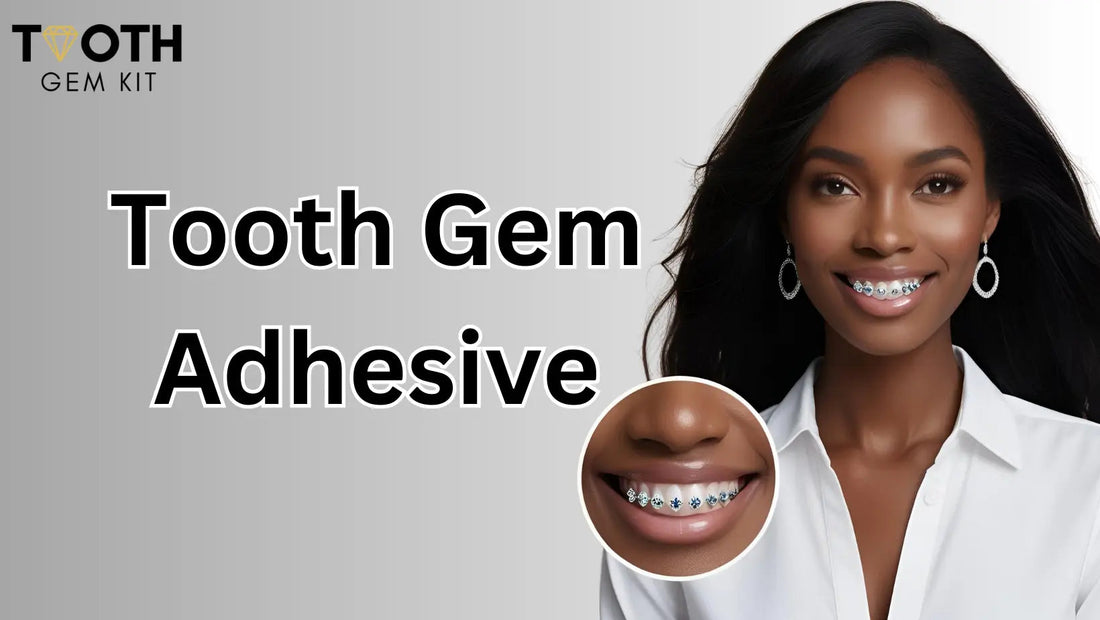
Tooth Gems Adhesive: Best Options for Safe Dental Application
Share
Choosing the right Tooth Gems Adhesive is essential for applying safely and successfully.
Dental-grade provides a strong bond while minimizing risk to your enamel, making it the preferred choice for at-home and professional applications.
Products you see online, like dental adhesives, are specially formulated for this purpose and are designed for easy use.
Trying to use alternatives like craft glue or superglue is risky and strongly discouraged, as they can damage your teeth and gums.
Professional Tooth Gems Adhesive: Shop Now!
What Is Tooth Gems Adhesive?
It is specifically designed to bond decorative gems to the surface of your teeth securely and safely.
Understanding the options, function, and differences from other dental adhesives makes it easier to make informed choices for both style and oral health.
Types of Adhesives Used
The most common adhesives are dental-grade resins. These adhesives are similar to those used in professional dental settings for bonding braces or fillings.
Types you might encounter include:
- Light-cured dental resin: Requires a UV or LED light to fully set, offering a secure, durable hold.
- Self-curing resin: Hardens without a light, but may not provide the same longevity as light-cured options.
Some at-home application products use milder adhesives, but these are typically less secure compared to professional products.
If you purchase for at-home use, be sure to check that the materials are dental-safe.
The safest choice is always adhesives labeled as dental grade.
How Tooth Gems Adhesive Works
It is engineered to bond non-porous materials, like crystal or metal, to tooth enamel.
The procedure starts by thoroughly cleaning and drying the tooth, which helps the adhesive stick properly.
- A small amount of adhesive is applied directly to the enamel.
- A specialized light activates the chemical reaction for light-cured adhesives, hardening the bond within seconds.
- Self-curing adhesives rely on a chemical mix that hardens over a few minutes.
The adhesive's strength allows decorations to remain attached for weeks or months, yet removal by a dental professional is straightforward.
Unlike brackets for braces, it is meant for short-term aesthetic use and should not damage your enamel when used as instructed.
Professional Adhesive Kit: Shop Now!
Comparison with Other Dental Adhesives
|
Application |
Strength |
Removability |
Typical Use |
|
Tooth Gems Adhesive |
Moderate |
Easy |
Cosmetic |
|
Bracket adhesive |
High |
Medium |
Braces |
|
Crown/veneer adhesive |
Very High |
Difficult |
Restorative |
The moderate strength of supports temporary wear but allows for hassle-free removal by a dental professional.
When comparing products, look for adhesives labeled as dental grade and safe for enamel to reduce risks to your teeth.
Choosing the Right Adhesive
Selecting the correct Adhesive kit ensures a secure bond and prioritizes your oral health.
The safest results come from knowing what makes a product safe, the pros and cons of professional versus DIY options, and which brands are trusted.
Criteria for Selecting Safe Products
- Focus on products labeled as dental-grade adhesive.
- Avoid multipurpose glues like super glue and nail glue.
- Look for adhesives that are BPA-free and cleared for medical or dental procedures.
- Ingredients should be clearly listed.
- Examine the packaging for tamper-evidence and check the expiration date.
Key checklist:
- Dental or medical grade
- Clear, complete ingredients list
- BPA-free formula
- Proper packaging and labeling
Professional vs. At-Home Adhesives
You might consider applying decorations at home, but dental professionals use adhesives that are light-cured and specifically designed for bonding to enamel.
These adhesives provide a strong, long-lasting bond and reduce the risk of damage or improper application.
At-home products sometimes use weaker adhesives or may encourage the use of unsuitable glues.
Using non-dental adhesives, like nail glue, can harm enamel and soft tissue, increasing infection risk and often resulting in failure.
A professional can ensure the surface is prepared correctly and the adhesive is applied with the right equipment.
This results in a safer, more reliable attachment.
Popular Brands and Formulations
Respected brands are known for their dental adhesives, commonly used by professionals.
Most clinic-grade adhesives are light-cured resins, which harden quickly when exposed to a dental curing lamp.
Some at-home options sold online advertise dental-grade adhesives, but always verify reviews and check if the product states it is safe for oral use.
Brands found on platforms like Amazon or professional dental retailers vary in quality, so confirm the adhesive matches your safety criteria.
Application Process
Systematic Guide to Applying:
- Clean and dry your tooth thoroughly.
- Use non-fluoride toothpaste to avoid bonding interference.
- Isolate the tooth with cotton rolls or gauze to keep it dry.
- Apply dental etchant for 20 seconds, then rinse and dry completely.
- Apply a thin layer of dental adhesive on the prepped area.
- Use a wax pen to place the gem flush with the enamel.
- Cure with a dental light until fully set.
- Avoid eating or drinking for at least 30 minutes.
Tools and Materials Needed
|
Item |
Purpose |
|
Decorative gem |
Cosmetic element |
|
Dental adhesive |
Bonds gem to tooth |
|
Dental etchant/primer |
Prepares enamel surface |
|
Applicator tool |
Places gem accurately |
|
Wax Pen |
Handles small gems |
|
Cotton rolls/gauze |
Keeps area dry |
|
Curing light |
Hardens adhesive |
|
Non-fluoride toothpaste |
Cleans tooth beforehand |
Best Practices for Longevity
It lasts longer with proper care and correct application.
- Keep the area dry during bonding
- Avoid chewing hard items
- Brush gently around the gem
- Maintain dental hygiene
- Visit a dentist for routine checks if needed
Always use dental-grade adhesives, as over-the-counter glues are unreliable.
Health and Safety Considerations
Potential Risks and Side Effects
Applying with unapproved adhesives, like super glue or nail glue, can lead to:
- Tooth decay
- Chipping or cracking
- Gum inflammation
Professional Adhesive reduces these risks significantly.
Precautions for Sensitive Teeth
Sensitive teeth require proper prep and safe adhesive.
- Use bonding agents for minimal irritation
- Avoid DIY methods with strong chemicals
- Let a dentist assess enamel first
- Stick to Tooth Adhesive that is gentle and tested
Always inform your dental provider about any existing sensitivity.
Trends and Innovations
Newer formulations of Adhesive:
- Provide stronger bonds
- Minimize sensitivity
- Are easier to remove
- Offer better curing results
Current innovations ensure durability without compromising safety.
